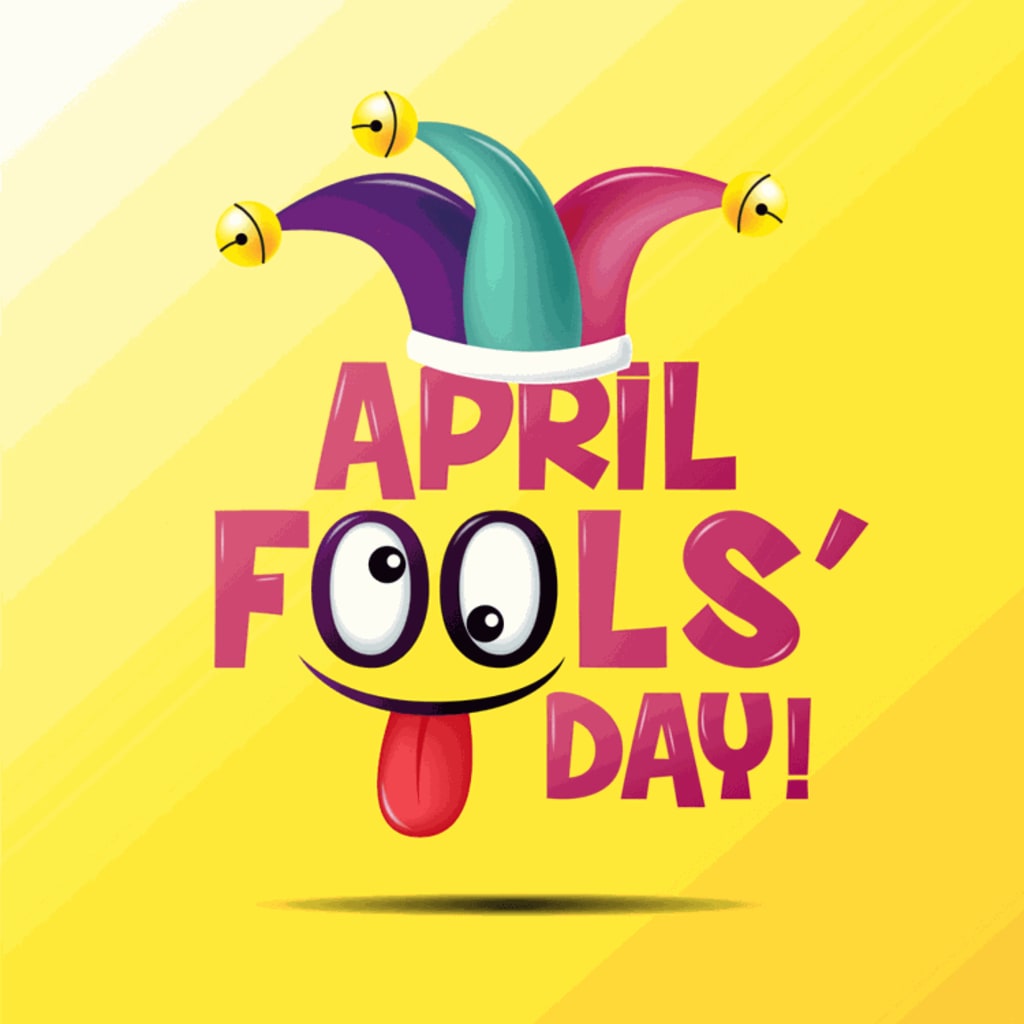APRIL FOOL'S DAY
FOOLISH DAY OF THE WORLD

April Fool's Day, also known as All Fools' Day, is an annual holiday celebrated on April 1st. On this day, people play practical jokes, pranks, and hoaxes on each other. The origins of the holiday are not entirely clear, but it is believed to have started in Europe during the Middle Ages.
The most common tradition on April Fool's Day is to play a harmless prank on someone, such as putting salt in their sugar jar, or telling them a believable lie. However, it's important to keep in mind that the pranks should be light-hearted and not intended to cause harm or offense.
In recent years, April Fool's Day has also become a popular day for companies and brands to release fake news, fake products, or fake promotions as part of their marketing strategies. It's always important to exercise caution and critical thinking when consuming information, especially on April Fool's Day, as some sources may publish fake news or hoaxes as part of their pranks.
Overall, April Fool's Day is a fun and light-hearted holiday that allows people to let loose and have some fun with their friends, family, and colleagues.
April Fool's Day is celebrated in many countries around the world, including the United States, Canada, India, Australia, and the United Kingdom.
In France, April Fool's Day is called "Poisson d'Avril," which translates to "April Fish." It is tradition to pin a paper fish onto someone's back without them noticing.
One of the most famous April Fool's Day pranks was the BBC's "spaghetti tree hoax" in 1957. The network aired a segment showing a family in Switzerland harvesting spaghetti from trees, which fooled many viewers.
Some popular April Fool's Day pranks include replacing someone's toothpaste with mayonnaise, putting a fake spider in someone's bed, or pretending to spill a drink on someone.
In recent years, social media platforms like Twitter and Facebook have become popular places for April Fool's Day pranks. For example, in 2015, Google announced a new feature called "Google Cardboard Plastic," which was a clear plastic version of their virtual reality headset.
Some people choose to skip the pranks and instead celebrate April Fool's Day by telling jokes or sharing funny memes with friends and family.
While April Fool's Day is generally a light-hearted holiday, it's important to be mindful of others' feelings and avoid pranks that could be hurtful or offensive.
HOW APRIL FOOL DAY IS FORMED
One theory suggests that April Fool's Day may have started in France in the 16th century. Before the adoption of the Gregorian calendar, New Year's Day was celebrated on April 1st. When the calendar changed in the late 16th century, moving New Year's Day to January 1st, some people who were slow to adopt the new calendar continued to celebrate the New Year on April 1st. These people were often made fun of and were called "April Fools."
Another theory is that April Fool's Day may have started as a celebration of the changing seasons. In many cultures, the first day of spring was a time for playing pranks and making jokes. In Europe, this tradition was often celebrated on April 1st.
Regardless of its origin, April Fool's Day has become a popular holiday around the world. It's a day to have fun, play pranks on friends and family, and enjoy a good laugh. However, it's important to keep the pranks harmless and avoid causing harm or offense to others.
In Scotland, April Fool's Day was traditionally celebrated over a two-day period. Pranks played on the first day were known as "hunting the gowk" (gowk being a word for cuckoo bird), and those played on the second day were known as "tailie day."
In Iran and other Persian-speaking countries, the holiday known as Sizdah Bedar is celebrated on the 13th day of the Persian New Year, which usually falls on or around April 1st. It is a day for picnicking and outdoor activities, and playing pranks is a common part of the celebration.
In some countries, such as Spain and Latin American countries, April Fool's Day is celebrated on December 28th, which is known as the Day of the Holy Innocents. This day commemorates the biblical story of King Herod ordering the massacre of all male infants in Bethlehem in an attempt to kill the baby Jesus.
In the United States, April Fool's Day became popular in the late 19th century and early 20th century, with newspapers and magazines publishing elaborate hoaxes and fake news stories. Some famous examples include a 1933 hoax by The Madison Capital-Times claiming that the state capitol building in Wisconsin was going to be moved to a new location, and a 1950 hoax by Life magazine claiming that Swiss farmers were harvesting spaghetti from trees.
Some countries have their own unique April Fool's Day traditions. For example, in Denmark, it is customary to send someone on a "fool's errand" by sending them on a pointless or impossible task. In Portugal, people throw flour at each other to celebrate the holiday.
Overall, April Fool's Day is a fun and light-hearted holiday celebrated in many different ways around the world. It's a time to enjoy some harmless pranks and jokes with friends and family, and to embrace the spirit of humor and lightheartedness.






Comments
There are no comments for this story
Be the first to respond and start the conversation.